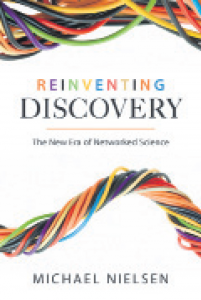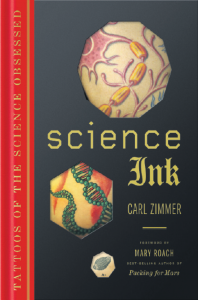FRIDAY, 27 APRIL 2012
Marie curie once said, “There is no connection between my scientific work and the facts of private life.” However, Lauren Redniss’ new pictorialised biography, Radioactive, makes the link between Marie and Pierre Currie’s private and professional lives visibly clear. By pairing the narrative with sketches, Redniss presents a new take on the history of the husband-and-wife team who discovered radioactivity, as well as the chemical elements radium and polonium. Much to the chagrin of readers searching for deep insight into the science behind the Curies’ achievements, the content of Radioactive reads much like a Wikipedia entry—although it does take salacious turns, venturing into the couple’s less well-known love scandals. Quotes from personal letters lighten the historical anecdotes, alongside accounts of individuals directly affected by events borne out of the Curies’ legacy, such as the Chernobyl disaster and the bombing of Hiroshima. Redniss also uses her own innovative techniques to tell their story. For example, her hand-coloured, blueprint-style illustrations reflect the colour of radium when spontaneously lit. However tempting, it would be a disservice to call Radioactivea picture book. It reveals the emotional backdrop to the Curies’ work in science, whilst also positing their discoveries in relation to the complexities of a new nuclear age. Leila HaghighatReinventing Discovery – Michael Nielsen
According to Michael Nielsen’s Reinventing Discovery, science is entering a new era that will be characterised by massive online collaborations, the general public contributing to research breakthroughs, and publications and data being open to all. Even if we can’t recognise it yet, Nielsen insists that this world of open and networked science has an incredible capacity to enhance our collective intelligence and make otherwise impossible discoveries. Nielsen draws upon a wealth of examples, from citizen science initiatives including Galaxy Zoo and Foldit, to other collaborative efforts in mathematics and genetics to illustrate how we can use online tools to change who can participate in scientific research. This exploration ends in an appraisal of why the current mantra of the research community, ‘publish or perish’, needs to change if we are to reap the benefits of this scientific revolution. Nielsen’s style is approachable and informative, and he presents a clear and insightful vision of the future of science. His careful analysis of the issues in convincing all parties to move towards a system of open science is one that is desperately needed. It should be read by anyone with even a casual interest in the future of scientific research. Matthew Dunstan
Science Ink – Carl Zimmer
Carl Zimmer’s fascination with science tattoos began after he spotted the familiar DNA double helix where he least expected: at the swimming pool, ‘inked’ on a scientist friend. Curiosity grabbed hold of Zimmer, and in response to a post about the tattoo on his blog, Carl began receiving photos of science enthusiasts’ geeky body art. Zimmer has carefully chosen a selection for his book, Science Ink: Tattoos of the Science Obsessed. Alongside full-sized pictures of the tattoos, carefully crafted tales incorporate both the deeply personal reasons behind each permanent mark and the scientific phenomena that they depict. Not to be missed: the nine axioms of set theory on the arm of a software designer in Colorado, fulvic acid on the back of a graduate student at Cornell, a eukaryotic cell on the shoulder of a postdoctoral researcher in Pennsylvania, and a noise circuit on the neck of an electrical engineer. Each page brings science to life on the skin of its tattooed victims: from graduate students and researchers to self-proclaimed geeks. In this unique way, Science Inkreminds us that science comes from us and can be a source of passion and pleasure for those who pursue it. Jordan Ramsey



